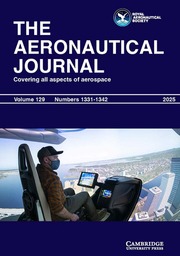No CrossRef data available.
Article contents
Smooth linear-parameter-varying identification of gas turbine engine models: a polynomial approach
Published online by Cambridge University Press: 04 September 2025
Abstract
Interpretability and explainability are at the core of applications developed for control of safety-critical systems, requiring low-complexity models, with physically meaningful insights, and maximum prediction accuracy. This can lead to two very distinct representations of non-linear systems: models purely based on first-principles, highly explainable but extremely difficult to use in practice, or data-intensive, with almost no interpretability but tailored to each specific application. To harness the advantages of both approaches, this paper introduces a novel polynomial linear-parameter-varying framework with stability guarantees to model gas turbine engines, with interpretable dynamical states. The identification problem is split into three stages: (i) identification of the scheduling variable mapping via least squares; (ii) identification of the state dynamics via constrained least squares optimisation involving linear matrix inequalities; (iii) identification of the output equation via least squares. The modelling framework inherits interpretability through the selection of physical variables as dynamical states, while model smoothness is enforced by the use of polynomial functions, which are amenable for control design and optimisation. A unique model for the gas turbine engine is obtained at sea level static, and then extended to wider operating conditions through transformations to referred variables. The effectiveness of the modelling framework is demonstrated on two scenarios, using an engine from the literature, in which low prediction errors were observed, including avoidance of instabilities. Potential applications range from digital-twins and Monte-Carlo simulations, to gain-scheduled and model predictive control, or even economic optimisation, among others.
Keywords
Information
- Type
- Research Article
- Information
- Copyright
- © The Author(s), 2025. Published by Cambridge University Press on behalf of Royal Aeronautical Society
Footnotes
This paper is a version of a presentation given at the ISABE Conference held in 2024.


